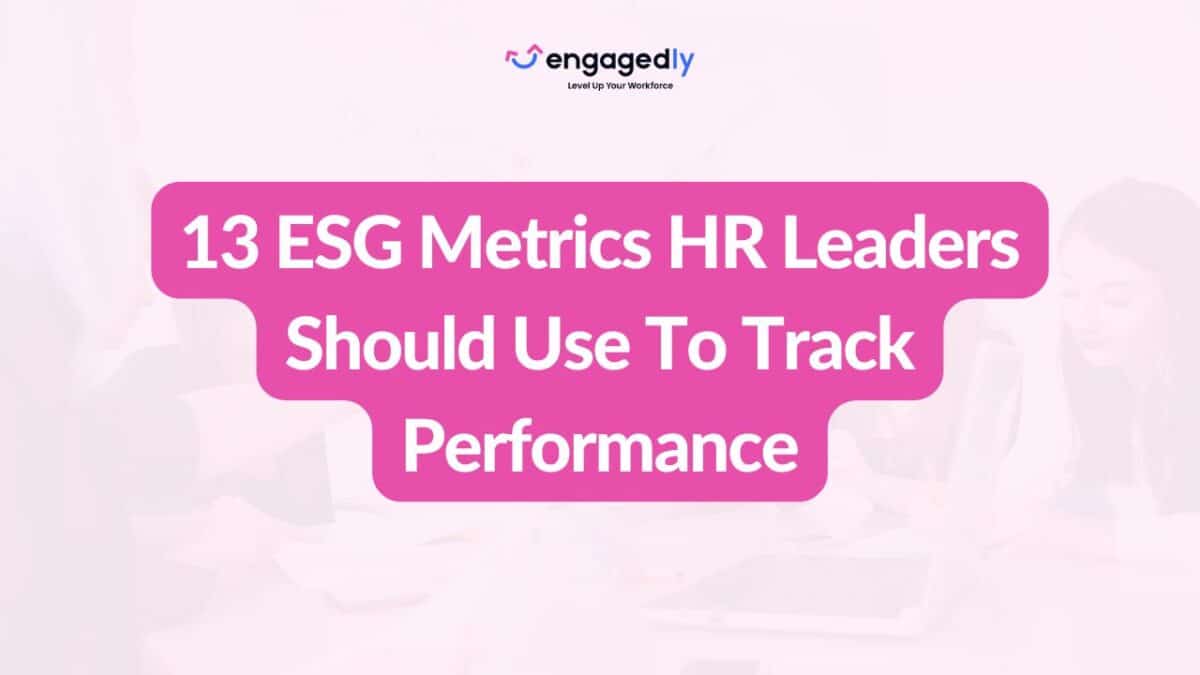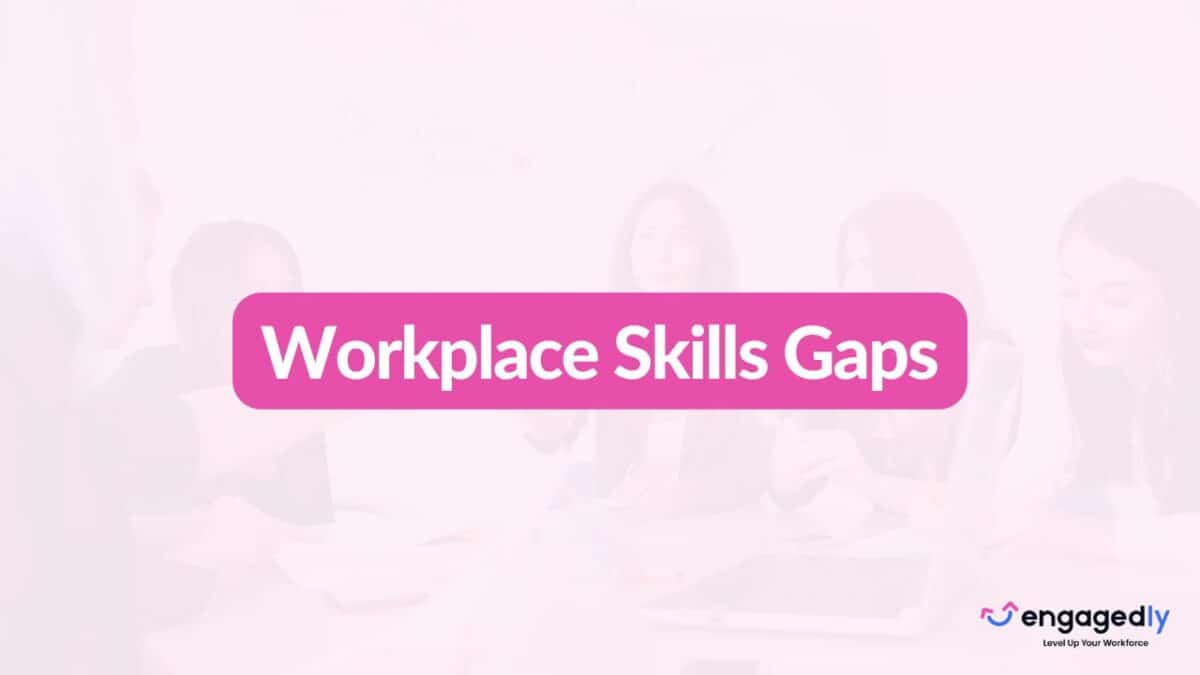Environmental, Social, and Governance (ESG) isn’t just a buzzword anymore—it’s become a core business strategy that impacts everything from investor decisions to employee engagement. And if you’re in HR, you’re sitting in the driver’s seat.
Here’s the reality: 77.2% of S&P 500 companies now incorporate ESG performance into their executive compensation design, and 75% of HR leaders report that ESG strategies positively impact employee engagement. The message is clear—ESG metrics are no longer optional; they’re essential for tracking organizational health and driving sustainable growth.
But which ESG metrics should you actually be tracking? Let’s dive into the 13 most critical metrics that HR leaders need to monitor to demonstrate real impact.
Why ESG Metrics Matter for HR
Before we get into the specifics, let’s address the elephant in the room: why should HR care about ESG metrics?
86% of employees in organizations with strong ESG commitments say they feel proud to be part of their organization. That’s not just feel-good data—that’s retention gold. When employees see their organization actively contributing to environmental, social, and governance goals, they feel more connected to both the company and their role within it.
As Dr. Dieter Veldsman, Chief HR Scientist at AIHR, puts it: “For ESG to have an impact, it has to speak to the hearts and minds of employees while also gathering the right commitment from executive teams. That way, ESG becomes practical, aligned to business goals, and helps instill the desired culture of accountability that the organization aims for.”
The 13 Essential ESG Metrics for HR Leaders
Social Metrics (The “S” in ESG)
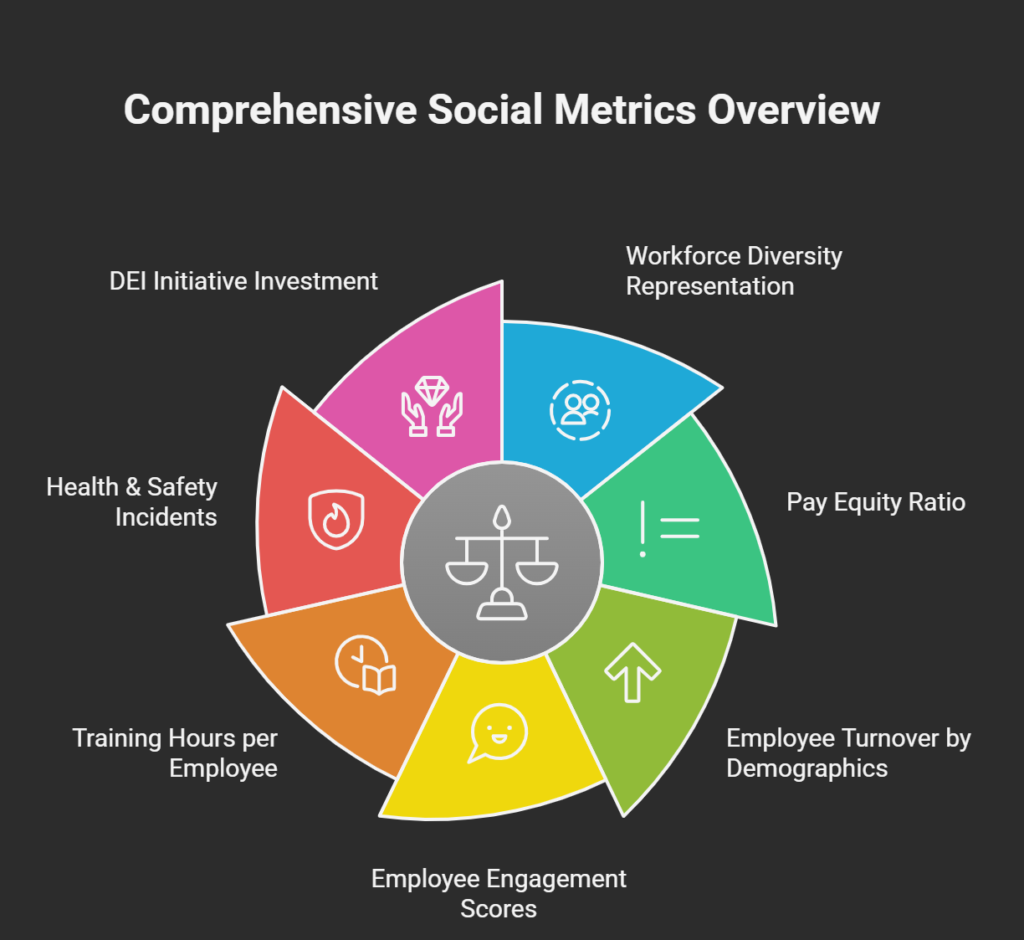
1. Workforce Diversity Representation
This is your baseline metric. Track the representation of different demographics across all levels of your organization—gender, ethnicity, age, disability status, and other relevant dimensions.
Companies at the top for gender diversity in the executive team are 25% more likely to have above-average profitability. Yet women of color account for only 4% of C-suite leaders, highlighting massive room for improvement.
How to measure it: Calculate the percentage of underrepresented groups at each organizational level (entry-level, mid-management, senior leadership, C-suite). Compare these figures against your industry benchmarks and local demographics.
Example: A tech company might discover they have 40% women in entry-level roles but only 15% in leadership positions. This gap signals potential barriers in advancement that need addressing.
2. Pay Equity Ratio
The pay gap isn’t just a social issue—it’s an ESG compliance issue. The executive’s pay ratio shows how much executives are paid in relation to the average employee, with some cases showing executives earning up to 5,000 times more.
How to measure it: Compare compensation across demographic groups doing similar work. Calculate both median and mean pay ratios between executives and average employees.
What good looks like: Leading companies publish transparent pay equity analyses and commit to closing gaps within specific timeframes.
3. Employee Turnover and Retention Rates by Demographics
General turnover rates only tell part of the story. You need to understand who is leaving and why.
How to measure it: Break down your voluntary turnover rate by gender, ethnicity, tenure, and department. Look for patterns that indicate potential bias or inclusion issues.
Red flag example: If women leave at twice the rate of men in the first two years, you likely have an inclusion or advancement problem, not just a retention issue.
4. Employee Engagement and Satisfaction Scores
75% of HR leaders believe that ESG initiatives increase employee engagement. But you need to measure this consistently to prove the connection.
How to measure it: Use pulse surveys and annual engagement surveys that specifically ask about ESG initiatives, inclusion, and belonging. Track eNPS (Employee Net Promoter Score) across different demographic groups.
Pro tip: Don’t just collect data—act on it. Employees can tell when surveys are performative versus when leadership genuinely uses feedback to drive change.
5. Training and Development Hours per Employee
ESG reporting increasingly focuses on how organizations invest in their people’s growth. 94% of workers surveyed said training existing employees on sustainability-related skills would build trust in a company’s ESG commitments.
How to measure it: Track total training hours per employee annually, including sustainability training, DEI education, leadership development, and technical skills advancement. Break this down by role and level.
6. Health and Safety Metrics
This includes injury rates, lost-time incidents, and near-miss reporting. While traditionally operational, these metrics are increasingly viewed through an ESG lens as indicators of how much an organization values employee wellbeing.
How to measure it: Calculate your Total Recordable Incident Rate (TRIR) and Lost Time Injury Frequency Rate (LTIFR). Benchmark against industry standards.
7. DEI Initiative Investment
41% of employees say they’re more likely to stay with companies that offer ESG-focused benefits. But genuine commitment requires financial investment.
How to measure it: Track total budget allocated to DEI programs, employee resource groups (ERGs), accessibility accommodations, and inclusion training. Calculate this as a percentage of total HR budget and revenue.
Reality check: If you’re talking about DEI constantly but spending less than 1% of your budget on it, employees will notice the disconnect.
Governance Metrics
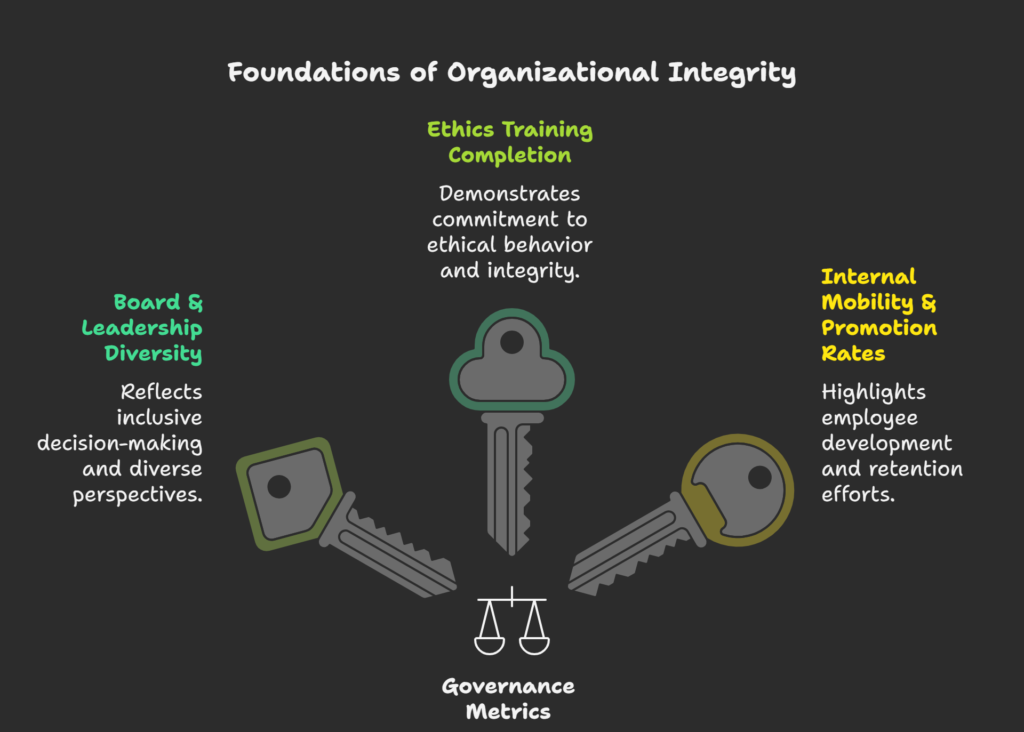
8. Board and Leadership Diversity
Diversity at the top matters. It influences decision-making, strategy, and organizational culture in profound ways.
How to measure it: Track the demographic composition of your board of directors and executive leadership team. Monitor changes over time and set specific targets for improvement.
Current landscape: There’s currently an all-time high of 10.4% female CEOs of Fortune 500 companies, but this remains disappointingly low given that approximately 50% of the workforce is female.
9. Ethics and Compliance Training Completion Rates
Governance isn’t just about policies—it’s about ensuring everyone understands and follows them.
How to measure it: Track completion rates for mandatory ethics training, anti-harassment training, and compliance courses. Monitor time-to-completion and assessment scores.
10. Internal Mobility and Promotion Rates
Who’s getting promoted and why? This metric reveals whether your organization provides equitable advancement opportunities.
How to measure it: Calculate promotion rates by demographic group, department, and level. Track the average time to promotion for different groups. Measure internal hiring versus external hiring for leadership roles.
What to look for: Significant disparities in promotion rates between demographic groups often indicate systemic bias in performance evaluation or succession planning.
Environmental Metrics (Where HR Can Make an Impact)
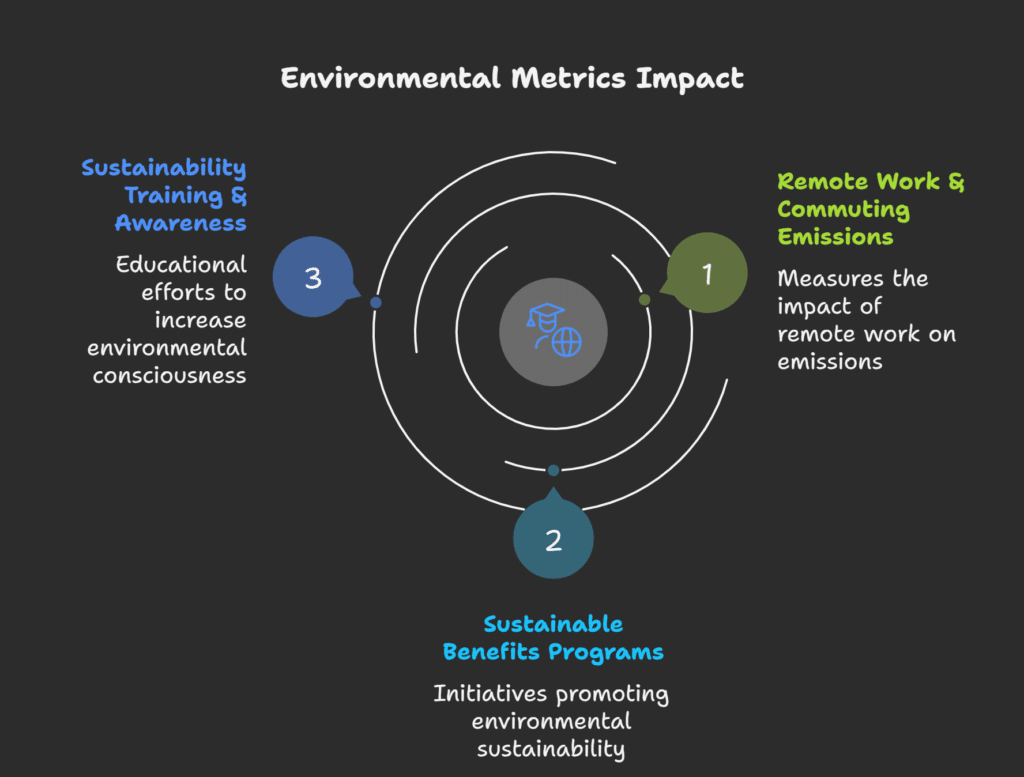
11. Remote Work and Commuting Emissions
HR is key in providing employee-related data, and they can see how environmental factors impact human capital. One of the most direct ways HR influences environmental metrics is through workplace flexibility policies.
How to measure it: Track the percentage of employees working remotely versus on-site. Calculate estimated emissions reduction from reduced commuting. Monitor business travel miles per employee.
Example impact: If 500 employees shift from daily commutes to hybrid work (3 days remote), you could reduce annual carbon emissions by hundreds of metric tons.
12. Sustainable Benefits Programs
Are your employee benefits supporting or undermining your environmental commitments?
How to measure it: Track uptake of sustainable commuting stipends, electric vehicle benefits, green retirement fund options, and wellness programs that reduce healthcare resource consumption.
13. Sustainability Training and Awareness
94% of workers surveyed said training existing employees on sustainability-related skills would build trust in a company’s ESG commitments.
How to measure it: Track the percentage of employees who’ve completed sustainability training. Measure changes in employee awareness of company ESG goals through surveys. Monitor participation in environmental initiatives like volunteer days or green teams.
How to Start Measuring ESG Metrics
Starting from scratch can feel overwhelming. Here’s a practical roadmap:
Step 1: Audit your current data collection What are you already tracking? Most organizations have more ESG-relevant data than they realize—it’s just scattered across different systems.
Step 2: Prioritize based on materiality Not all metrics will be equally important for your organization. Human capital management remains the most widely used ESG metric category, but your specific industry and stakeholder expectations should guide your priorities.
Step 3: Establish baselines You can’t track progress without knowing your starting point. Collect at least one year of historical data before setting targets.
Step 4: Set SMART goals Vague commitments like “improve diversity” won’t cut it. Set specific, measurable targets: “Increase women in senior leadership from 15% to 25% by 2027.”
Step 5: Create regular reporting cadences Most companies choose to publish ESG reports annually, alongside their financial reports. But internal monitoring should happen more frequently—quarterly at minimum for key metrics.
Step 6: Connect metrics to outcomes The power of ESG metrics isn’t just in tracking them—it’s in demonstrating their impact on business outcomes. Connect your DEI metrics to innovation rates, your training investments to employee retention, and your sustainability initiatives to employer brand strength.
Common Pitfalls to Avoid
Measuring vanity metrics: Having 10,000 hours of DEI training means nothing if behaviors haven’t changed and representation hasn’t improved.
Ignoring intersectionality: Don’t just track gender or ethnicity separately. Women of color account for only 4% of C-suite leaders, showing that examining multiple dimensions of identity reveals deeper disparities.
Setting it and forgetting it: The use of diversity, equity & inclusion (DEI) metrics declined between 2023 and 2024, although a closer analysis suggests a shift in how DEI is being assessed. Stay adaptable as best practices evolve.
Lacking executive buy-in: Without C-suite commitment, ESG metrics become another HR checkbox rather than a strategic imperative.
The Future of ESG Metrics in HR
The ESG landscape is evolving rapidly. In 2025, ESG reporting is shifting from voluntary to mandatory in many regions, with new regulations in the EU, US, and UK requiring companies to publish environmental and social performance data alongside financial results.
For HR leaders, this means your role in ESG reporting will only grow. The organizations that start building robust ESG measurement systems now will be far ahead when regulations tighten further.
More importantly, the connection between ESG performance and business success is undeniable. Companies improving performance on ESG metrics while pursuing stronger growth and profitability deliver superior shareholder returns.
Taking Action
Here’s the bottom line: ESG metrics aren’t about checking compliance boxes or looking good in annual reports. They’re about fundamentally understanding whether your organization is creating value for all stakeholders—employees, communities, investors, and the planet.
As Tom Douglas, chef and talk show host, puts it: “Sustainability starts with your staff.” And for HR leaders, that means having the data to prove you’re not just talking about values—you’re living them.
Start with the metrics that matter most for your organization. Build your measurement capability over time. And most importantly, use the insights you gain to drive real change.
Because in the end, the best ESG metric is the one that leads to action.

